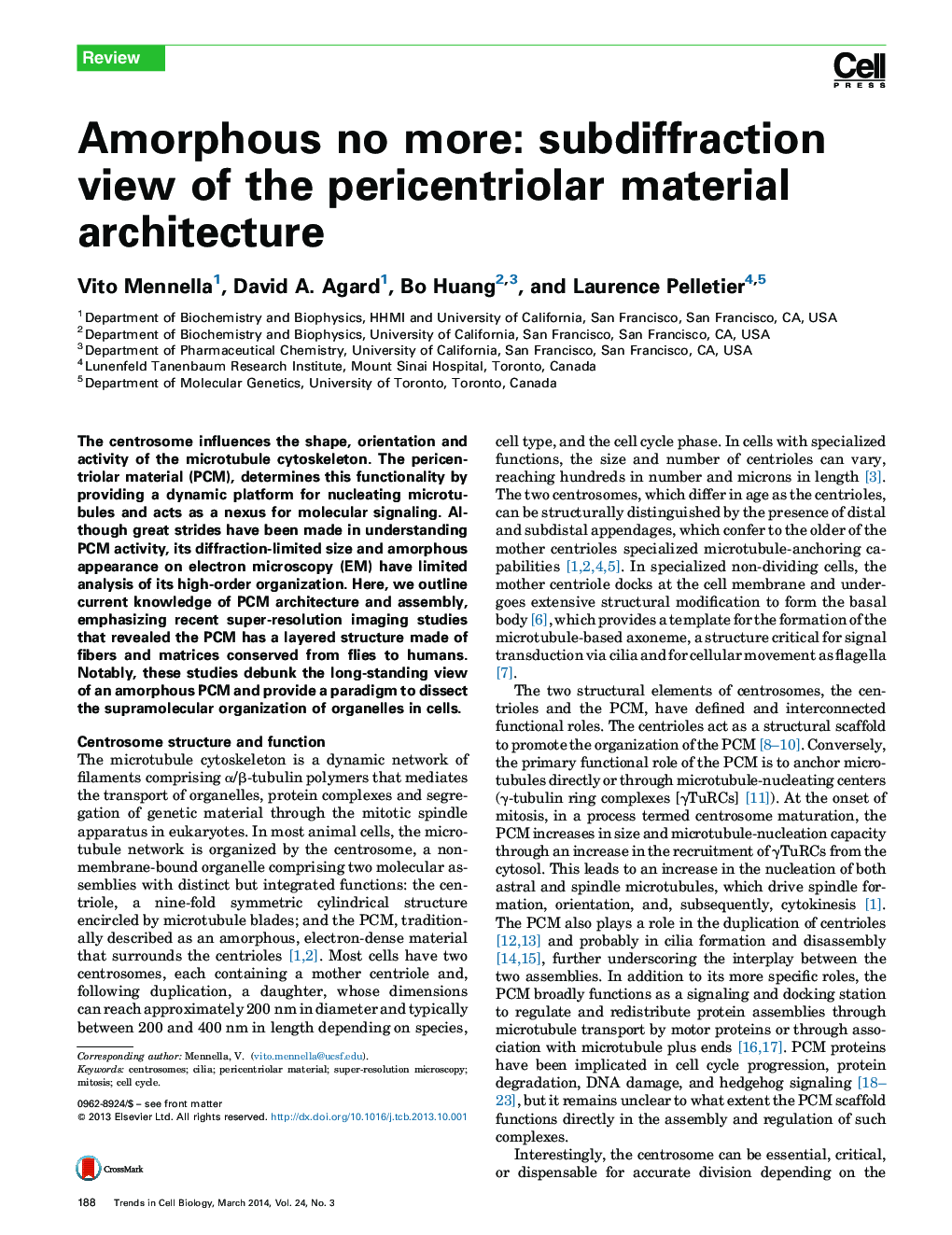| Article ID | Journal | Published Year | Pages | File Type |
|---|---|---|---|---|
| 2204430 | Trends in Cell Biology | 2014 | 10 Pages |
•The PCM is not amorphous, but has a defined molecular architecture.•The PCM comprises proteins organized as molecular fibers and matrices.•During centrosome maturation the PCM proximal layer acts as a scaffold for PCM expansion.•3D volume alignment and averaging determines protein position within few nm error.•Super-resolution microscopy with quantitative image analysis reveals organelle architecture.
The centrosome influences the shape, orientation and activity of the microtubule cytoskeleton. The pericentriolar material (PCM), determines this functionality by providing a dynamic platform for nucleating microtubules and acts as a nexus for molecular signaling. Although great strides have been made in understanding PCM activity, its diffraction-limited size and amorphous appearance on electron microscopy (EM) have limited analysis of its high-order organization. Here, we outline current knowledge of PCM architecture and assembly, emphasizing recent super-resolution imaging studies that revealed the PCM has a layered structure made of fibers and matrices conserved from flies to humans. Notably, these studies debunk the long-standing view of an amorphous PCM and provide a paradigm to dissect the supramolecular organization of organelles in cells.
